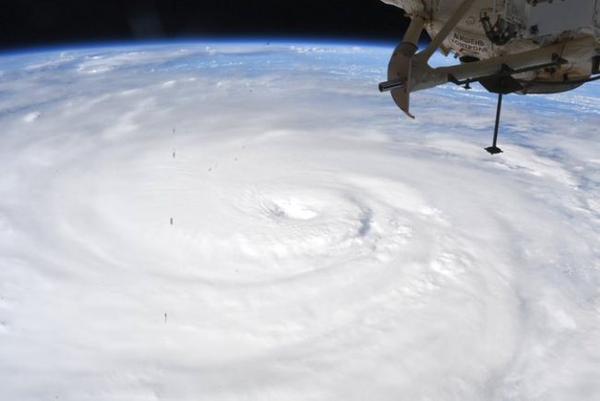
ARSE Digest 2: Only The Weeks Best Space Pics
Share
This week's photos are more jumbled than a bag of Cadbury Favourites.
You'll laugh, you'll cry...
You'll scream "CHYNAAAAAH" (maybe).
Some images are happy, some sad, some stone-cold reminders of how fragile the balance of nature is and where we, as a species, fit in the massive expanse of the universe.
Only one way to find out...
Scroll on.
California Wildfire's Pyrocumulonimbus Cloud From Space

Image credit: NOAA
These "fire clouds" are formed above a source of heat, such as wildfires or volcanic eruptions. They can suck so much oxygen out of the fire zone that they extinguish the fire itself.
The smoke in the below picture is from the National Oceanic and Atmospheric Administration (NOAA) and features a plume that reached upwards of 14,000m on September 6th.
Summer 2020 has ranked as one of the hottest on record for the United States as climate change trends continue to worsen.
As an added bonus, here's the same plume from NASA's Earth Observatory the day after (September 7th).

Image credit: NASA Earth Observatory
This is from the data collected by the Moderate Resolution Imaging Spectroradiometer (MODIS) tool on NASA's Aqua Satellite and the NOAA's Visible Infrared Imaging Radiometer Suite (VIIRS).
No matter how the fires start, their severity and length are entirely dictated by the ever-growing change in Earth's climate.
Super Typhoon Haishen From The ISS

Image credit: NASA Astronaut Chris Cassidy
The first powerful tropical cyclone of the 2020 tropical typhoon season shot by Chris Cassidy aboard the International Space Station. Typhoon Haishen making landfall over Japan and the Korean Peninsula with a total of seven million people being evacuated.
The Joint Typhoon Warning Centre (JTWC) clocked wind speeds at 250km/h at its peak as a Category 4 super typhoon.
The image above is the dying stage of the typhoon as ocean heat made for unfavourable conditions in supporting such a massive weather system. As central pressure decreased. so did wind speeds and the weakening led to the clear, symmetrical eye of the typhoon degrading away.
NGC 2188 - The Tilted Galaxy

Image credit: ESA/Hubble & NASA, R. Tully
A freshly discovered galaxy from the Hubble telescope features sparkling blue and orange stars and a diameter of approximately 50,000 lightyears. The galaxy can be found in the Columba constellation an is around half the size of the Milky Way.
At first look, it appears the galaxy is a slanted, narrow band, it's actually classified as a "barred spiral galaxy". This means the inner straight edge spins and the surrounding stars follow it lagging behind like a spiral.
For reference, here is the NGC 1300 Galaxy, another barred spiral galaxy but much more pronounced:

Image credit: NASA, ESA, and The Hubble Heritage Team STScI/AURA
Chinese Rocket Booster Allegedly Crashes Next To School

Image credit: China Aerospace Science and Technology Corp
That's the Long March 4B rocket launching the Gaofen 11(02) satellite into orbit for Earth observation at the Taiyun Satellite Launch Centre on the 7th of September.
While not particularly amazing by any stretch of the imagination, the nature of Chinese rocketry has a rather ominous and threatening feel.
China routinely launches rockets only to have the first stage booster free-fall back to Earth over densely populated areas.
And this one was no different.
Watch as the booster rocket falls to Earth next to a school and spews toxic yellow smoke from the hypergolic propellant.
For a more in-depth look, read this article we posted about the situation.
Some impressive footage from today's Long March 4B first stage return.
— LaunchStuff (@LaunchStuff) September 7, 2020
ℹ:https://t.co/9oRPoR0ZdF pic.twitter.com/SEl7t1u5xJ
Want more space stuff to pad out a boring work week?
Or just a lonely space nerd thirsty for more Aussie space banter?
We have the prescription for what you're missing...





